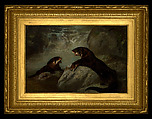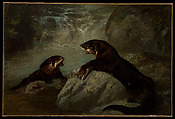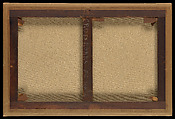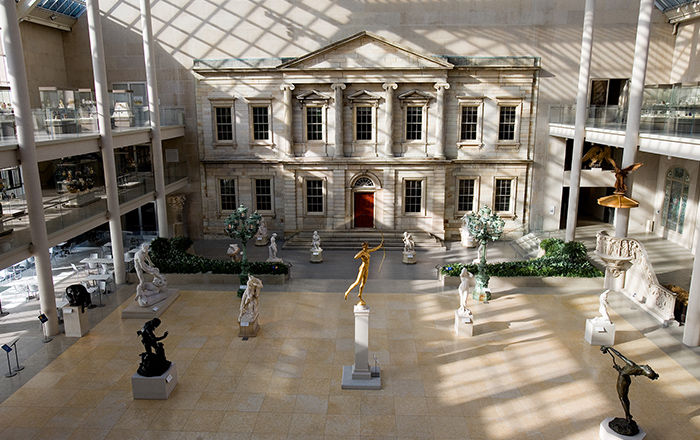Returned to lender The Met accepts temporary loans of art both for short-term exhibitions and for long-term display in its galleries.
Otters by the Water’s Edge
Arthur Fitzwilliam Tait American, born England
Not on view
Arthur Tait settled in New York City from his native England in 1850, and quickly established himself as a leading painter of animals and of hunting, fishing and camping scenes. His paintings were very popular as well as the prints he produced through Currier and Ives, after his paintings.
A favorite region for his art was the Adirondacks, where he spent summers on Loon Lake, Racquette Lake, and Long Lake. From 1874 to 1877, he lived year round at Long Lake, and after that time continued to spend his summers there until 1888. North American River Otters are prevalent in the Adirondack waterways and Tait found them to be a perfect subject for his art. The earliest known painting, which is inscribed by the artist on the back of the canvas: "No. 3 / A Natural Fisherman 1875 / Otter w. Trout / A.F. Tait /Long Lake / Hamilton County / NY," is in the collection of the Adirondack Museum (1974.101.0001) and portrays a large glistening otter on a rock in a stream, with his forepaws holding down a brook trout that it has just caught. Otters by the Water’s Edge depicts two large otters confronting each other with teeth bared, as the one at right protects the brook trout that it has just caught by securing it with his forepaws. A rushing waterfall provides the backdrop for this scene.
This image cannot be enlarged, viewed at full screen, or downloaded.
This artwork is meant to be viewed from right to left. Scroll left to view more.




